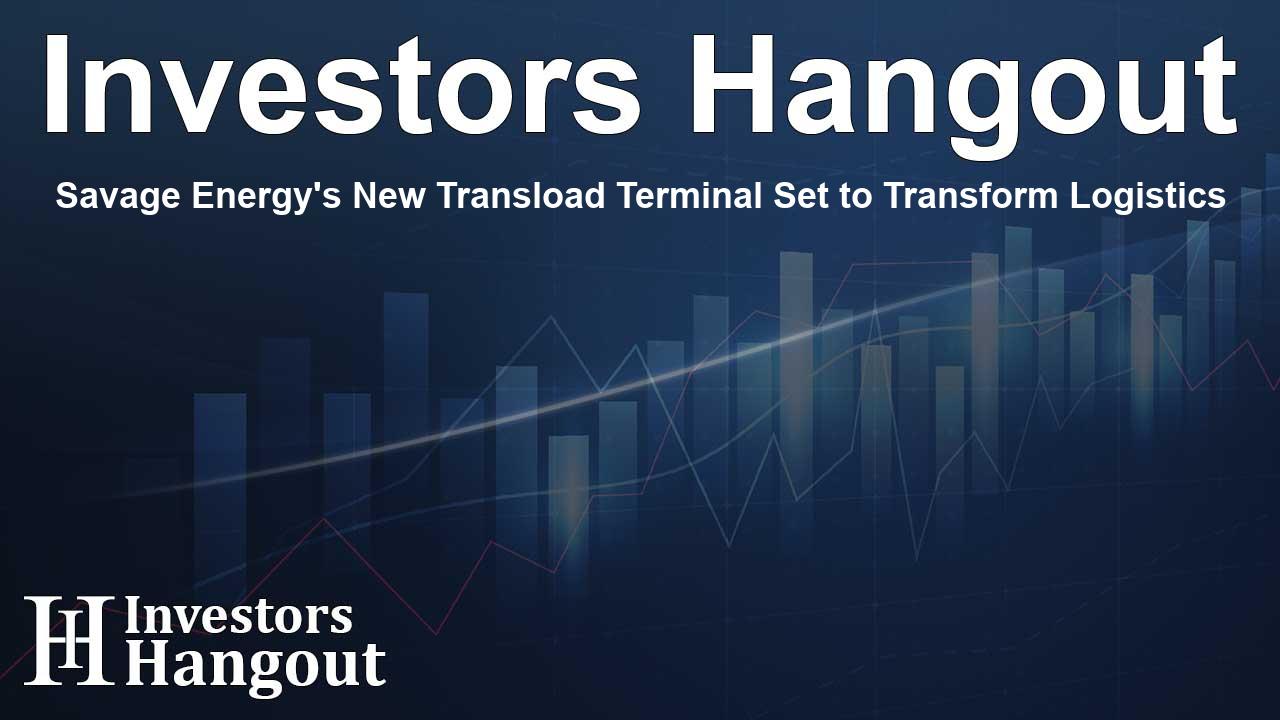Savage Energy's New Transload Terminal Set to Transform Logistics

Savage Energy's New Transload Terminal to Boost Logistics
Savage has unveiled plans to develop a cutting-edge crude-by-rail transload terminal aimed at enhancing supply chains for transporting crude oil from the Uinta Basin to refineries throughout North America. The terminal will connect producers to key markets, leveraging rail transport to create a more efficient and effective system for moving resources.
Enhancing Energy Market Access
Strategic Development in Utah
The newly planned terminal, strategically positioned in Carbon County, will facilitate the unloading of Uinta Basin's unique yellow and black wax crude from tanker trucks into specialized heated tanks. The crude will then be swiftly loaded into unit trains equipped with insulated rail cars for efficient transport to end markets.
Government Support and Economic Growth
Local leaders recognize the project's potential impact. As Gov. Spencer Cox noted, this initiative not only bolsters Utah’s role in the national energy supply chain, but it also enhances economic resilience and energy security. By efficiently linking production areas with refinery markets, the terminal supports rural communities and contributes to America’s energy independence.
Operational Efficiency for Producers
Facilitating Increased Production
Jason Ray, president of Savage Infrastructure, highlighted that the new terminal will enable Uinta Basin producers to ramp up production levels. This facility will significantly reduce logistical challenges, allowing producers to avoid the burdens of lengthy trucking routes and inadequate waiting times for solutions.
Rail Network Connectivity
Designed with connectivity in mind, the Savage Wellington Transload Terminal will offer essential links to both Union Pacific and BNSF railroads, thereby granting access to a vast national rail network. This strategic point will ensure that producers can effectively reach refineries across the United States.
Supporting Economic Development
Growth within the Savage Transload Network
The Wellington terminal will be an integral part of Savage's expanding Transload Network, which encompasses over 50 terminals across North America. The terminal is also designed to handle a variety of industrial bulk and liquid commodities, thus fostering regional economic development and growth.
Key Infrastructure Contributions
This facility, located near the Savage Energy Terminal, operates within the guidelines of the Utah Inland Port Authority's Castle Country Project Area. It aims to enhance strategic infrastructure, boost energy access, and stimulate development in Carbon and Emery counties.
Community and Industry Collaboration
Partnership with Local Authorities
Ben Hart, executive director of the Utah Inland Port Authority, expressed pride in supporting Savage’s initiative. Projects of this caliber are seen as crucial to modernizing Utah's logistics and encouraging rural economic activity, which is vital for community growth.
Future Prospects for the Uinta Basin
Rikki Hrenko-Browning, president of the Utah Petroleum Association, shared optimism regarding the Uinta Basin's growth potential, especially concerning emerging export markets. The collaboration with Savage is seen as a vital step in bringing more infrastructure investments to the area, setting a positive trajectory for local producers.
Contact Information
For inquiries regarding business opportunities, please reach out to Savage's Business Development team.
About Savage
Founded in 1946, Savage is a globally recognized provider of supply chain solutions and infrastructure. With over 4,000 dedicated team members in approximately 200 locations across the United States, Canada, Mexico, and Saudi Arabia, Savage is committed to sustainability and safety. They focus on delivering essential services that help their customers thrive, ensuring their operations contribute positively to feeding the world, powering lives, and sustaining the planet.
Frequently Asked Questions
What is the purpose of the Savage Wellington Transload Terminal?
The terminal will facilitate efficient transportation of crude oil from the Uinta Basin to refineries across North America.
How does the terminal enhance energy market access?
It connects local producers directly to national railroad networks, improving logistical efficiency and reducing transport delays.
What types of commodities will the terminal handle?
In addition to crude oil, the terminal will accommodate various bulk and liquid commodities to support regional industrial needs.
Who are the key stakeholders in this project?
Local government officials and organizations such as the Utah Inland Port Authority are actively supporting the development of the terminal.
How does this project benefit the local community?
It promotes economic development, enhances job opportunities, and supports rural economies through improved infrastructure and logistics.
About Investors Hangout
Investors Hangout is a leading online stock forum for financial discussion and learning, offering a wide range of free tools and resources. It draws in traders of all levels, who exchange market knowledge, investigate trading tactics, and keep an eye on industry developments in real time. Featuring financial articles, stock message boards, quotes, charts, company profiles, and live news updates. Through cooperative learning and a wealth of informational resources, it helps users from novices creating their first portfolios to experts honing their techniques. Join Investors Hangout today: https://investorshangout.com/
Disclaimer: The content of this article is solely for general informational purposes only; it does not represent legal, financial, or investment advice. Investors Hangout does not offer financial advice; the author is not a licensed financial advisor. Consult a qualified advisor before making any financial or investment decisions based on this article. The author's interpretation of publicly available data presented here; as a result, they should not be taken as advice to purchase, sell, or hold any securities mentioned or any other investments. If any of the material offered here is inaccurate, please contact us for corrections.